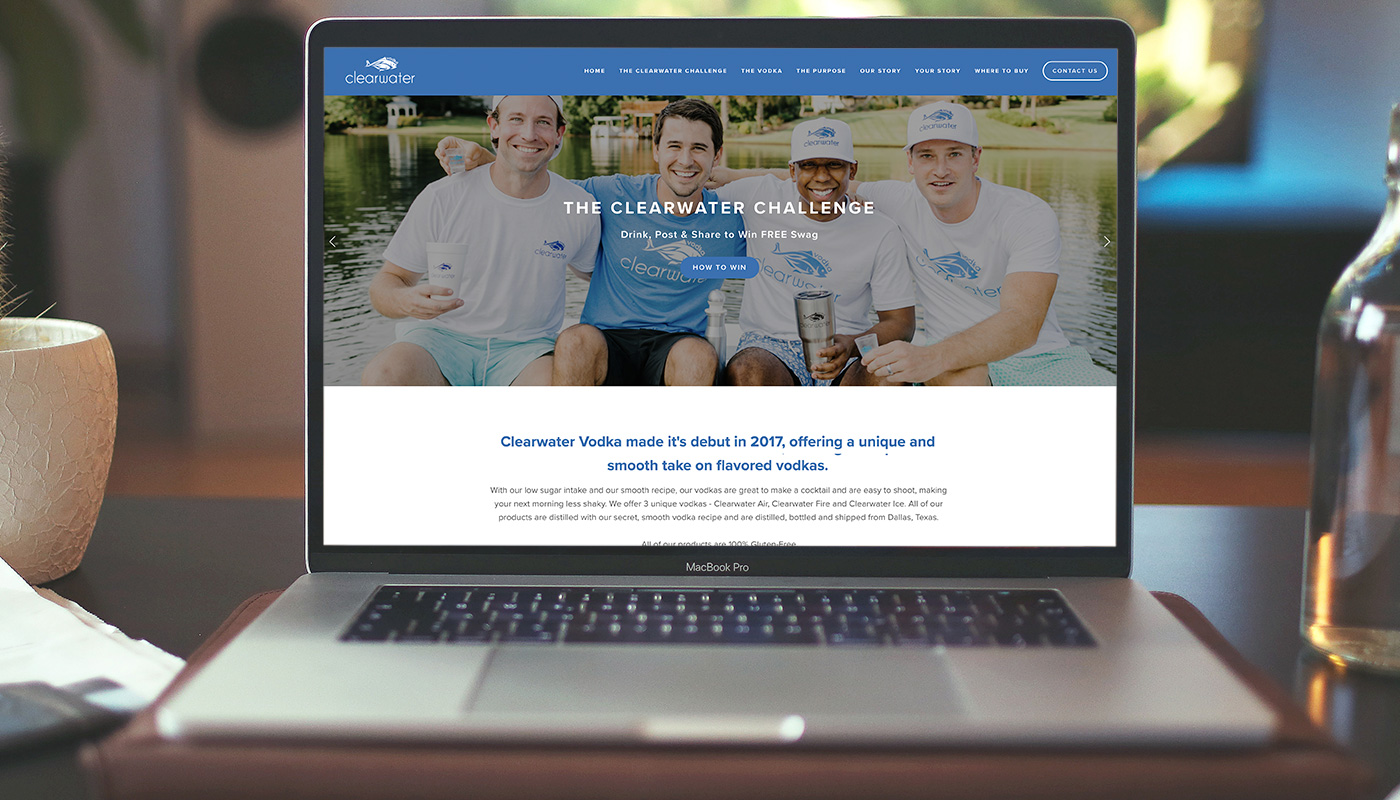Revamping eCommerce Platforms for Better User Experience

In today’s fast-paced digital world, eCommerce businesses can’t afford to fall behind. As customer expectations and technologies evolve, an outdated website can hinder growth and conversions. An eCommerce platform revamp—redesigning and optimizing your online store—is essential for staying competitive, improving user satisfaction, and boosting performance.
At Kinetik Agency, we help businesses transform their digital storefronts into seamless, conversion-focused experiences. This guide explores why redesigning your eCommerce platform matters, key steps to success, and how a strategic revamp can elevate user experience and long-term growth.
Why an eCommerce Platform Revamp Is Necessary
Over time, even the best-performing eCommerce websites start showing signs of age. Technologies change, design trends evolve, and customer behavior shifts. What once felt cutting-edge can quickly become frustrating for modern users.
A platform revamp addresses these evolving needs by focusing on usability, accessibility, speed, and personalization.
Here are a few common signs that your eCommerce platform needs an update:
- Declining conversion rates despite steady traffic
- High bounce rates and cart abandonment
- Slow loading times or poor mobile responsiveness
- Outdated visuals and complex navigation
- Customer complaints about usability or checkout issues
If any of these sound familiar, it’s time to evaluate your website’s user experience and functionality.
The Role of User Experience in eCommerce Success
User experience (UX) is the backbone of every successful eCommerce platform. When users can easily find what they need, understand the value of your products, and complete purchases effortlessly, they’re more likely to return and recommend your brand.
A well-executed eCommerce platform revamp focuses on the entire customer journey—from discovery to post-purchase engagement.
Some key elements that drive great UX include:
- Simplified product categorization and filtering
- Seamless checkout processes
- Clear product visuals and descriptions
- Fast page load times
- Mobile-optimized interfaces
These details might seem small, but collectively they determine whether your visitors stay or leave.
Planning Your eCommerce Platform Revamp
A successful redesign begins with a strategic plan. Jumping straight into design without analyzing your existing system can lead to missed opportunities or repeated mistakes.
Here’s a structured approach to planning your eCommerce revamp:
1. Conduct a Comprehensive Site Audit
Before you can improve, you need to understand what’s not working. Evaluate current performance metrics—page load speeds, conversion rates, bounce rates, and user navigation paths.
Identify friction points through analytics and user feedback. Pay special attention to checkout drop-offs and mobile usability issues.
2. Gather User Feedback
Direct input from your customers is invaluable. Use surveys, heatmaps, and usability tests to uncover where users struggle or lose interest. Their feedback can guide your redesign priorities.
3. Define Clear Objectives
What do you want to achieve from your platform revamp? Common goals include increasing conversions, improving retention, enhancing brand image, or simplifying backend management.
Having measurable objectives ensures your redesign is both strategic and impactful.
4. Choose the Right Platform
Sometimes, revamping involves more than a new design—it may require migrating to a new platform. Whether you’re moving from Magento to Shopify, WooCommerce to BigCommerce, or another CMS, choose a system that supports scalability, security, and flexibility.
Kinetik Agency’s About page highlights their expertise in platform migration and redesign projects, ensuring businesses transition smoothly without data loss or downtime.
Key Design Improvements That Enhance User Experience
When redesigning an eCommerce platform, every design decision should aim to simplify and delight. Here are some of the most impactful areas to focus on:
1. Streamlined Navigation
A clean, intuitive menu and logical product categorization make it easy for users to find what they need. Consider using breadcrumb trails, predictive search, and smart filters to enhance discoverability.
2. Responsive and Mobile-First Design
With mobile shopping dominating the market, your site must adapt seamlessly across devices. A mobile-first approach ensures consistency, accessibility, and better performance on all screen sizes.
3. Faster Loading Speeds
Every extra second of load time can cost conversions. Optimize images, leverage caching, and use content delivery networks (CDNs) to deliver faster page loads.
4. Enhanced Visual Storytelling
Your design should reflect your brand’s personality. Use high-quality product images, lifestyle visuals, and consistent color schemes to build trust and connection.
5. Simplified Checkout Process
One of the biggest conversion killers is a complicated checkout. Enable guest checkout, minimize form fields, and integrate multiple payment options to ensure a frictionless experience.
6. Accessibility and Inclusivity
An accessible eCommerce site welcomes all users, including those with disabilities. Following WCAG standards ensures that your platform is usable with screen readers, proper contrast ratios, and keyboard navigation.
Integrating New Technologies for Better Performance
Modern eCommerce experiences are powered by technology. During your revamp, integrating advanced tools can transform how users interact with your store.
Some innovations to consider include:
- AI-driven product recommendations for personalized shopping
- Chatbots for instant customer support
- Augmented reality (AR) for virtual try-ons or product previews
- Progressive Web Apps (PWAs) for app-like speed and offline capabilities
These upgrades not only enhance usability but also improve engagement and conversion rates.
Optimizing for Conversions
An eCommerce redesign isn’t just about aesthetics—it’s about results. Optimizing your platform for conversions means aligning every design and functionality choice with your business goals.
Tactics to increase conversions include:
- Prominent, persuasive calls-to-action (CTAs)
- Clear pricing and transparent shipping information
- Trust signals like reviews, testimonials, and security badges
- A/B testing different layouts, buttons, and messaging
Continuous testing ensures that your redesign delivers measurable growth.
Measuring Success After the Revamp
Once your new platform is live, measurement is key. Use analytics to track changes in metrics like:
- Conversion rates
- Average session duration
- Cart abandonment
- Bounce rate
- Customer satisfaction scores
Gather post-launch feedback to ensure your new design aligns with user expectations. Adjust where necessary to refine the experience continuously.
Partnering with Experienced Professionals
Revamping an eCommerce platform is a major investment that requires expertise across design, development, SEO, and UX strategy. Partnering with experienced digital agencies ensures that your redesign aligns with both user needs and business goals.
Kinetik Agency specializes in end-to-end eCommerce solutions—from strategy and UX design to platform migration and optimization. Their multidisciplinary approach helps brands build powerful, scalable, and user-focused online experiences that drive long-term success.
Final Thoughts
A successful eCommerce platform revamp isn’t just about changing your website’s appearance—it’s about reimagining how your customers interact with your brand. By focusing on user experience, leveraging technology, and optimizing for performance, you can transform your store into a growth engine that meets modern expectations.
Whether you’re considering a redesign or a full migration, take time to plan strategically, gather user insights, and partner with experts who understand the intersection of design and business results.
Visit Kinetik Agency to learn more about their approach to digital transformation and how they help eCommerce brands build experiences that convert and delight.
Frequently Asked Questions
Most eCommerce platforms benefit from a redesign every 3–5 years, depending on technological changes and customer expectations.
A redesign focuses on improving the look, feel, and functionality of your existing platform. A migration involves moving to a new system for better scalability or performance.
By addressing navigation, speed, mobile responsiveness, and checkout simplicity, a revamp makes shopping smoother and more enjoyable for customers.
Monitor conversion rates, session duration, bounce rates, and customer satisfaction to measure the success of your revamp.
Agencies bring specialized expertise in UX design, development, SEO, and performance optimization—ensuring your investment yields measurable business outcomes.













